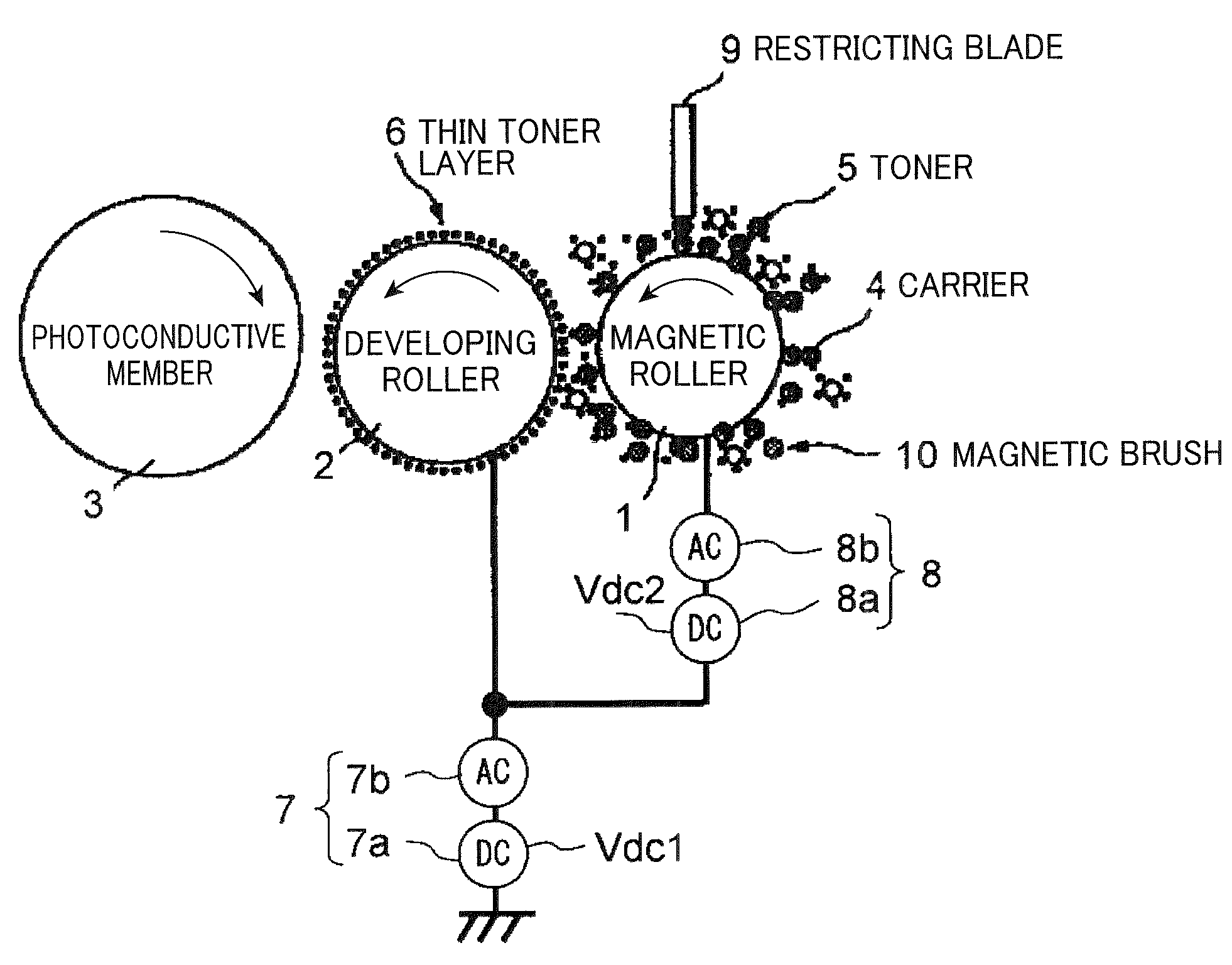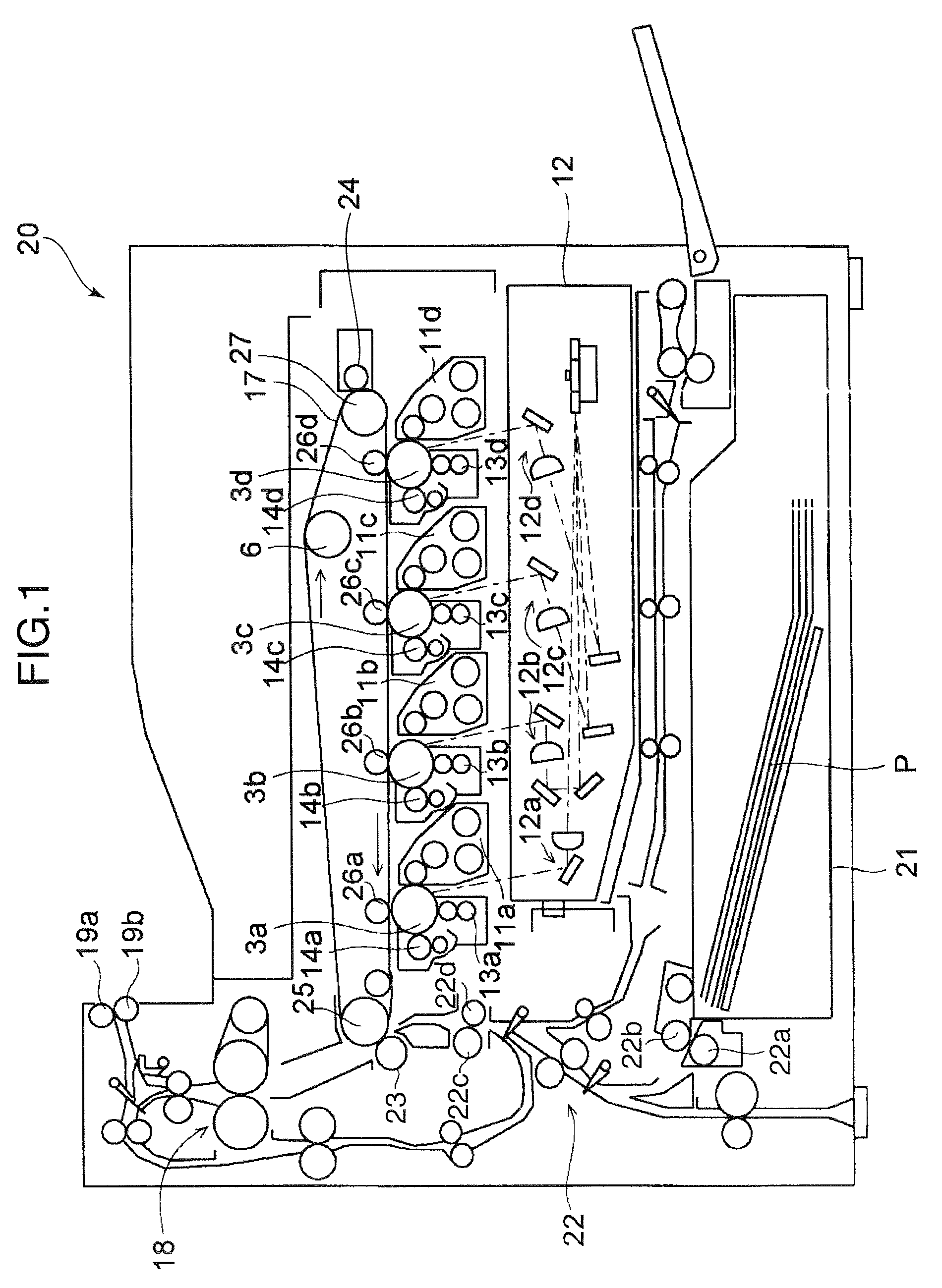Image forming apparatus
a technology of image forming apparatus and developing roller, which is applied in the direction of electrographic process apparatus, instruments, optics, etc., can solve the problems of less durable developing roller and supply roller, large and complicated development device, and increased consumable cost, so as to improve the developability of the photoconductive member, improve the developability, and facilitate the balance
- Summary
- Abstract
- Description
- Claims
- Application Information
AI Technical Summary
Benefits of technology
Problems solved by technology
Method used
Image
Examples
Embodiment Construction
[0031]One embodiment of the present invention is described below with reference to the accompanying drawings, but the present invention is not limited to this embodiment. The embodiment of the present invention is a most preferable mode of the invention and the application thereof and terms and the like used here are not limited thereto.
[0032]FIG. 1 is a schematic diagram showing the entire construction of an image forming apparatus 20 according to one embodiment of the present invention. The image forming apparatus 20 includes rotatable photoconductive members 3a to 3d provided in correspondence with the respective colors of black (B), yellow (Y), cyan (C) and magenta (M). An amorphous silicon photoconductor or an organic photoconductor (OPC) is, for example, used as a photoconductive material for forming photoconductive layers of the photoconductive members 3a to 3d.
[0033]A developing device 11a to 11d, an optical exposure device 12a to 12d, a charger 13a to 13d and a cleaning de...
PUM
 Login to View More
Login to View More Abstract
Description
Claims
Application Information
 Login to View More
Login to View More - R&D
- Intellectual Property
- Life Sciences
- Materials
- Tech Scout
- Unparalleled Data Quality
- Higher Quality Content
- 60% Fewer Hallucinations
Browse by: Latest US Patents, China's latest patents, Technical Efficacy Thesaurus, Application Domain, Technology Topic, Popular Technical Reports.
© 2025 PatSnap. All rights reserved.Legal|Privacy policy|Modern Slavery Act Transparency Statement|Sitemap|About US| Contact US: help@patsnap.com



